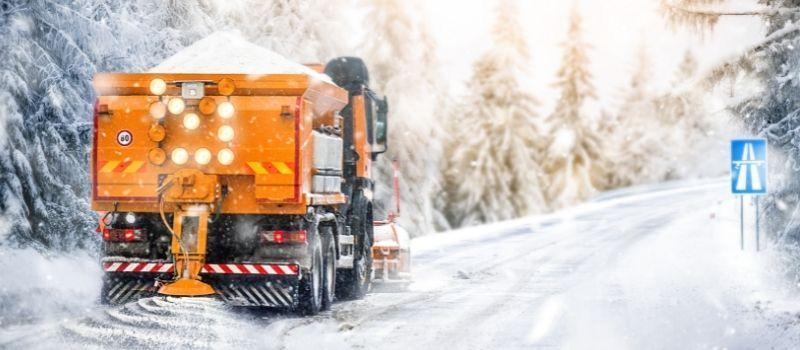With winter around the corner, it is crucial to be prepared for the worst conditions we can face in the UK.
Snow and ice often grind the country to a halt. Making sure you have the correct materials to deal with it can be crucial.
We have looked at one item that we find is popular during this time of the year, ProBrine. It is an alternative to standard salt and has slowly become the norm for dealing with snow and ice.
What is ProBrine?
Probrine is becoming a popular method used to reduce the impact that snow and ice have on our roads and pavements.
It is made from 20% solution liquid de-icing brine, which blends white marine salt with corrosion inhibitor to reduce the ice on any metal by over 80%.
This type of de-icer is popular as it is eco-friendly, there are no solvents used, and reduced salt is used. By doing this, it means the ProBrine isn’t destructive to surrounding areas.
Advantages and Disadvantages to using ProBrine
There are several advantages to using ProBrine rather than standard salt as your de-icer. The freezing point of ProBrine is -21C. This makes it suitable for even the coldest of UK winters.
A big factor in people’s decision to use ProBrine is the price. You will find ProBrine is cheaper to use than other winter treatment options.
You won’t need to use as much post-treatment. ProBrine works to prevent snow from bonding with the pavement, which then slows down the process of ice forming on a surface. Once the snow melts and ice start to show, you will be able to reduce the amount of post treatment you need to use to remove any leftover ice. This will reduce the amount of money and time you spend on ice prevention.
There are also lower labour costs if you use ProBrine as a pre-treatment. ProBrine is easier than salt to spread and therefore takes less time and fewer people to do it.
The materials used in the manufacturing of ProBrine is less harmful to surfaces compared to standard salt. The way the ProBrine is spread, and the chemicals used to make the de-icer ensures it won’t damage any surfaces that it is spread across.
As with anything, there are some drawbacks to using ProBrine which you need to consider before deciding to use ProBrine over standard salt. ProBrine can take longer to work compared to standard salt. This is because it can take longer to melt ice that has already settled on the ground. For this reason, ProBrine is commonly used as a pre-treatment rather than during or post-treatment.
When to use ProBrine
ProBrine is best used as a pre-treatment as it prevents snow bonding with the ground. Therefore, the best time to use ProBrine is when snow is predicted in the weather forecast. If snow has started to fall lightly, then using ProBrine will still work as you are covering the ground while fresh snowfalls and reducing the likelihood the snow will bond with the ground.
If snow has already fallen and has been around for a day, ProBrine may not be the best treatment to use. This is because snow will have started bonding with the ground and ice will be forming.
If you decide to use ProBrine, be sure to have a post-treatment plan prepared to keep your roads, pavement or business entrance safe for use.
We do offer a wide range of shovels that can be used after you have used the treatment on affected areas.
Our small Hand Snow Shovel allows you to quickly remove left over snow from a small area.
If you need a shovel for larger areas, the CEMO Heavy Duty GRP Snow Shovel is the shovel for the job.
If you’d like to find out more about the winter products we have available, please contact our sales team on 01777 858009 or email sales@kingfisherdirect.co.uk.






